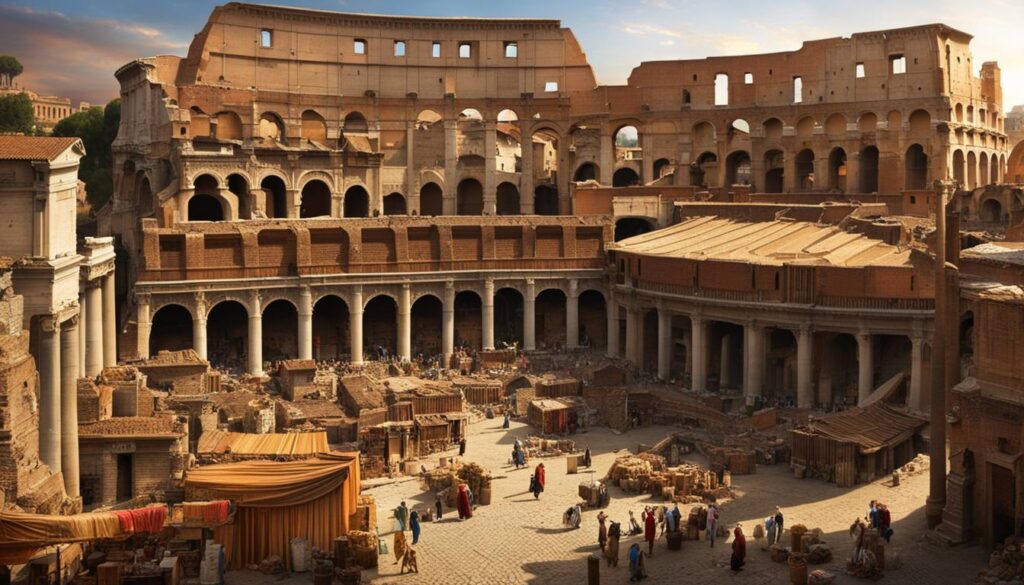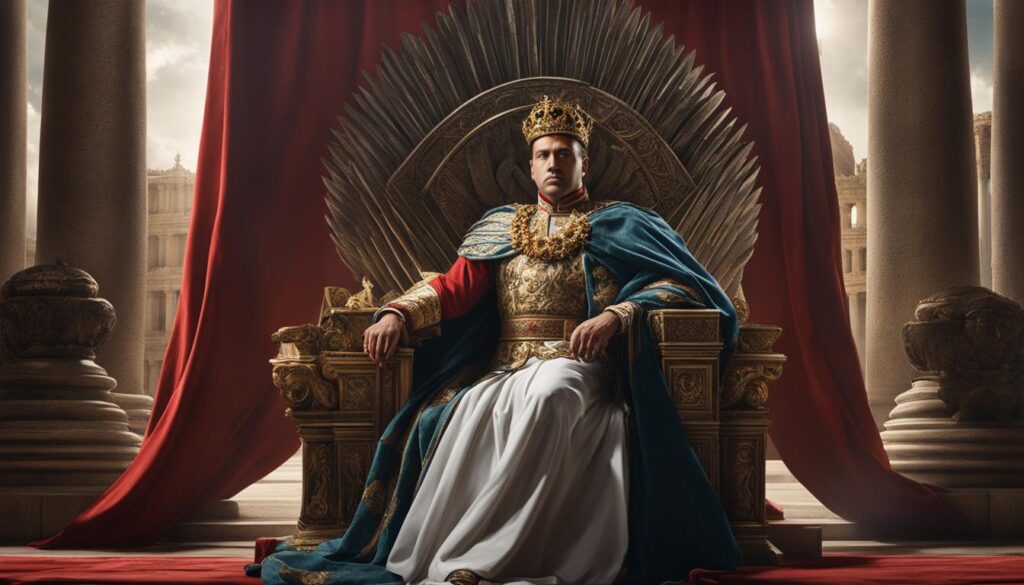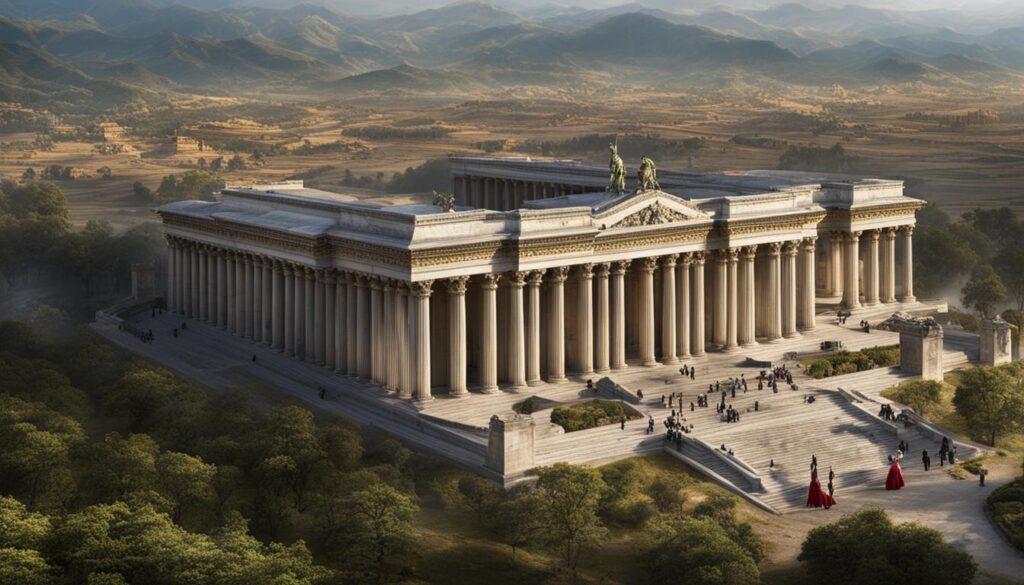If you’re interested in learning about one of the most fascinating eras in human history, you’ve come to the right place. The Roman Empire, Ancient Rome, and the broader Roman civilization are essential parts of our modern world. Understanding them will help you trace the roots of many of our present-day institutions and cultural practices.
Whether you’re a student, a history buff, or someone with a basic curiosity about the world, this article will offer an accessible introduction to Roman history and culture. A civilization that lasted over a thousand years, the Romans left an indelible mark on Western culture. By the end of this article, you’ll have a better appreciation for the lasting legacies of this remarkable civilization.
First, we’ll start with the basics, covering Roman history and culture for beginners. We’ll look at the rise and fall of the Roman Empire, delve into daily life in Ancient Rome, and explore the art, architecture, and mythology of this ancient civilization. With a broad understanding of Roman history and culture, you’ll be ready to take a deeper dive into specific topics that interest you.
So what are you waiting for? Let’s dive into the amazing world of Ancient Rome.
The Origins of Rome
According to legend, Rome was founded in 753 BCE by the twin brothers Romulus and Remus. However, historians suggest that the city’s origins are more complex and multifaceted. Rome emerged as a small settlement on the banks of the Tiber River, inhabited by Latins, Sabines, and Etruscans.
The early history of Rome saw a succession of kings who were reputed to have contributed to the city’s growth and development. Roman history timeline records seven kings ruling over Rome from its founding to the establishment of the Republic in 509 BCE. These kings expanded Rome’s territory through war and conquest, built temples, walls, and other public works, and established the political and legal institutions that would form the basis of Roman society. Among them, King Servius Tullius was renowned for his administrative skills and social reforms.
The transition from monarchy to republic was a significant milestone in Roman history. The establishment of the Republic saw the formation of two Consuls, elected officials who would hold office for one year and govern the city together. The Consuls were accountable to the Roman Senate, a body composed of patricians (aristocrats) who deliberated on matters of state. The Roman Republic period lasted from 509 BCE to 27 BCE and saw the extension of Roman control over much of the Mediterranean through a combination of diplomacy and military might.
Daily Life in Ancient Rome
From emperors to commoners, life in Ancient Rome was characterized by a rigid social structure. Such a structure was based on social status and birth. Roman society placed immense value on the institution of family, and this is reflected in the way the society was structured.
Education
Public education was virtually non-existent in Ancient Rome, and only the rich could afford to hire private tutors. The focus was on mathematics, literature, and rhetoric. The children of wealthy families were also taught to read and write in Latin, the language of the empire.
| Social Class | Education |
|---|---|
| Upper class/wealthy families | Private tutoring, literate in Latin |
| Middle class | Basic reading and writing |
| Lower class/slaves | No education |

Social Hierarchy
Slaves made up a significant proportion of Ancient Rome’s population, and their labor was crucial to the empire’s functioning. Roman society was also divided into various classes, determining the level of privilege and influence a person had. At the top were the patricians, followed by the plebeians, and at the bottom were the slaves. This social structure was reinforced by laws and customs that separated the classes of society. Social mobility was possible, but it required significant wealth and status to attain.
Class Structure
- Patricians: Wealthy, aristocratic families with political power
- Plebeians: Commoners and small farmers
- Slaves: Property who had no rights and were obligated to work
Entertainment
Entertainment was an essential aspect of daily life in Ancient Rome, and the empire was home to some of the most magnificent public works devoted to leisure activities. These included amphitheaters, circuses, and baths. The Romans were also famously fond of gladiator battles, which were held in huge arenas such as the Colosseum. Chariot races, hunting, and various forms of theater, such as comedy and tragedy, were also popular pastimes.
“When in Rome, do as the Romans do.”
Ancient Rome was a complex society with a definite way of life that we may still recognize today. From the hierarchical social structure to their love of entertainment and leisure, the daily habits of the ancient Romans reveal much of the way they lived and interacted with one another.
Roman Art and Architecture
The Romans were both innovative and influential when it came to art and architecture. They created impressive and awe-inspiring structures that still stand today as a testament to their skill and creativity.
Roman architecture is known for its jaw-dropping achievements, such as the Colosseum, which held up to 80,000 spectators in its day, and the Pantheon, which boasts the world’s largest unreinforced concrete dome. In addition to their monumental structures, the Romans also excelled in intricate details, such as Roman mosaics. These mosaics, made up of tiny pieces of stone or glass, often depicted scenes from everyday life or mythological stories.
“We found Rome a city of bricks and left it a city of marble.”
Roman Art
Roman art draws heavily from the Greeks, but with its unique twist that reflected Roman society’s values. Many Roman art pieces depict historical events, battles, and notable characters from Roman mythology, all aimed at glorifying Rome and its accomplishments.
Roman Architecture
Roman architecture was marveled for its structural achievements, creativity, and functionality. Many Roman structures had dual purposes, such as the Colosseum, which was used for both entertainment and political purposes. Roman engineers developed innovative techniques, such as arches and domes, that not only added to the beauty of the structures but also distributed weight more efficiently.
Achievements in Roman Art and Architecture
The Romans’ incredible artistic and architectural achievements paved the way for many future civilizations and remain influential today. Roman architecture techniques such as arches and vaults have been incorporated into modern buildings. Roman art continued to flourish throughout the centuries, with Renaissance art draw heavily upon and inspired the beauty and complexity of ancient Rome.
Roman Mythology and Religion
During the height of the Roman civilization, religion played a vital role in shaping their culture. For the Romans, religion was a significant part of their daily lives, with the gods and goddesses worshipped for their powers of protection and favor.
Roman mythology is rich in fascinating tales of heroic legends and creation myths, with gods such as Jupiter, Mars, Venus, and Minerva having significant influence over different aspects of life. Each god had a specific role in Roman society, and they were often depicted in art and sculpture with their attributes, such as Jupiter’s thunderbolt or Minerva’s spear and helmet.
Religious rituals in Ancient Rome were carried out in public and in private, often involving animal sacrifices, to ensure the favor of the gods. It was customary to pay homage to the gods through offerings of food and drink, and special occasions, such as weddings and funerals, were marked with specific religious ceremonies.
The Romans believed that following religious rituals would secure them success and prosperity in all aspects of their lives.
“Religion in Ancient Rome was viewed as a tool to appease the gods and ensure a prosperous life for the people,” said Professor A. Goldstein, a Roman history expert. “It was regarded as a social institution that provided community cohesion and was vital in shaping the identity of the Roman civilization.”
As the Roman Empire expanded, so did the influence of its gods, with new divinities being added to the pantheon. The rise of Christianity, however, brought an end to the worship of the Roman gods as the official religion of the Empire, leading to significant changes in religious practices. Nonetheless, the influence of Roman mythology and religion remains visible in art, literature, and language, making it an important aspect of global culture today.
Roman Military and Conquests
During its peak, the Roman Empire boasted a military force that was feared and respected across the ancient world. From the conquest of Italy to the expansion of territories in North Africa, Iberia, and the Middle East, Roman conquests paved the way for the empire’s unparalleled success.
At the heart of the Roman military was their cutting-edge, standardized equipment, and tactics. Soldiers were equipped with the gladius sword, shield, and auxiliary weapons. They would form formations such as the tortoise and the wedge, which gave them an advantage over their enemies.
The Roman army had a hierarchical structure divided into legions, cohorts, and centuriae. Commanders were responsible for ensuring discipline and training for their soldiers. In addition, they had to pay attention to strategy and attack plans that helped the Roman military achieve victories in battle.
The battles resulted in the acquisition of territories, resources, and riches, which the Romans exploited to build infrastructure and maintain their empire’s needs. However, despite the empire’s dominance, the Roman military often faced resistance and challenges from various tribes and foreign cities. Some of the most significant military campaigns include the Punic Wars against Carthage, the conquest of Gaul under Julius Caesar, and the establishment of the Roman province of Britannia in 43 AD.
The Roman military left a legacy of warfare tactics, equipment, and strategies that would influence medieval and modern European warfare, leaving a lasting impact on military history.
Roman Governance and Law
In Ancient Rome, the system of governance and law played a crucial role in the functioning of the empire. The Senate was the primary legislative body, made up of senators that were appointed by the Roman consuls. The Senate was responsible for passing laws, managing foreign affairs, and overseeing the administration of the state.
The emperor held significant power in Ancient Rome, acting as the ultimate authority in the empire. Emperors such as Augustus and Julius Caesar were revered as gods and wielded immense control over the state and its citizens. They had the power to enact laws, declare war, and make decisions that directly affected the lives of millions of Romans.
“The more corrupt the state, the more numerous the laws.” – Tacitus
The development of Roman law was also a critical aspect of the governance system. Justinian’s Code, compiled in the 6th century AD, served as the legal foundation of the Roman Empire and influenced the development of legal systems throughout Europe and the world.
| Key Facts: | Ancient Rome Governance and Law |
|---|---|
| System of Governance | The Senate was the primary legislative body, and the emperor held ultimate authority in the empire |
| Law and Legal Systems | Developed the foundation of Roman law, which influenced legal systems throughout Europe and the world |
| Impact on Today | The Roman Empire’s governance and legal systems played a significant role in shaping modern-day politics and law |
Today, the governance and legal systems of Ancient Rome continue to have a profound impact on modern society. The legacy of the Roman Empire can be seen in the political and legal systems of countries around the world, highlighting the enduring influence of this ancient civilization.
Roman Trade and Economy
One of the reasons for Ancient Rome’s success was its thriving trade and economy, which allowed the Empire to prosper and expand. At its peak, the Roman Empire covered over five million square kilometers and had a population of approximately 60 million people, all of whom required resources to live.
The Romans traded with various regions, including China, India, and Africa, exchanging goods such as silk, spices, and ivory. The empire’s extensive trade network facilitated the movement of people and goods, facilitating cultural exchange and economic growth.
Agriculture was a crucial component of the Roman economy, with farmers producing grain, wine, and olives. The empire’s fertile lands allowed for a surplus of crops, which could be traded or sold. The Romans also built an elaborate system of roads and aqueducts to transport food, water, and other goods throughout the empire.
“The secret to Roman success was the use of money. Money made Rome great… and it drove Rome’s enemies to defeat.” – Barry Strauss
| Commodities | Trading Partners | Quantity |
|---|---|---|
| Grain | Egypt | 2 million tons per year |
| Silk | China | Varied |
| Spices | India | Varied |
| Gold and silver | Spain | Varied |
Aside from trade, the Romans also made use of a standardized currency system that made transactions simpler and more efficient. The use of coins such as the denarius and aureus helped fuel the empire’s growth and enabled individuals to accumulate wealth.
The Roman Empire’s trade and economy were essential to its success and longevity. The empire’s extensive trading network and robust agricultural production allowed for economic growth and cultural exchange, while its standardized currency system facilitated transactions and enabled individuals to accumulate wealth.
Roman Contributions to Language and Literature
Ancient Rome’s linguistic and literary culture continues to impact the world today. The Latin language, which developed in the Roman Empire, serves as the root for many modern languages, including Spanish, French, and Italian, as well as their derivatives. Latin was once an essential component of higher education and a lingua franca used by scholars and diplomats.
Roman literature also showcases the vast cultural and intellectual achievements of the Roman civilization. Legendary writers such as Virgil, Ovid, and Cicero produced works that melded Greek mythology and Roman history, exploring their own society’s values and beliefs.
Virgil’s epic poem, The Aeneid, relates the tale of a Trojan hero and the foundation of Rome. Meanwhile, Ovid’s Metamorphoses chronicle the transformation of the world and humanity through the tales of Greek and Roman myths. Cicero’s speeches, on the other hand, exemplify the power and eloquence of Roman rhetoric and oratory.
“The life of the dead is placed in the memory of the living.” – Cicero
The Roman contributions to language and literature are noteworthy for the lasting influence they have on Western culture. They serve as a testament to the sophistication and ingenuity of Ancient Rome, continuing to inspire and educate modern audiences.
Decline and Fall of the Roman Empire
Despite its grandeur and power, the Roman Empire eventually came to a decline and ultimately fell. This section will explore the various factors that contributed to this downfall.
External Threats
The Roman Empire faced numerous foreign invasions, including the Visigoths, Huns, and Germanic tribes. These attacks weakened the military strength of Rome, making it difficult to defend against further invasions.
Internal Turmoil
Political instability and corruption also plagued the Roman Empire. The constant struggle for power among politicians and emperors led to frequent coups and assassinations, destabilizing the empire from within.
Economic Challenges
The Roman economy faced several challenges, including inflation and the overreliance on slave labor. The cost of maintaining the military also drained the empire’s financial resources, leading to a decline in infrastructure and social services.
Legacy of Ancient Rome
From language and law, to architecture and governance, the legacy of Ancient Rome endures to this day. The Romans made significant contributions to Western civilization, shaping its cultural, political, and social landscapes.
Roman civilization served as a foundation for many contemporary systems, including architecture. Influenced by the Roman tradition, buildings such as the U.S. Capitol in Washington, D.C., and the Supreme Court of the United States bear historic Roman neoclassical designs and symmetrical proportions. Moreover, the Roman Empire’s legal system, particularly the concept of rule of law, continues to shape judicial systems worldwide. The development of Latin, the Roman language, influenced the evolution of modern Romance languages such as French, Spanish, and Italian.
The Romans also made contributions to mathematics, medicine, and science, with notable figures such as Galen and Ptolemy.
Conclusion
Congratulations! You have completed Roman History and Culture 101 for Beginners. By exploring the origins of Rome, daily life, art and architecture, mythology and religion, military conquests, governance and law, trade and economy, language and literature, decline and fall, and legacy, you have gained a foundational understanding of Roman civilization.
Through your journey, you have learned that Ancient Rome was much more than just an empire. It was a multifaceted society with rich cultural, political, and economic influences. By studying Roman history and culture, you can better understand the world we live in today and appreciate the lasting impact of this fascinating civilization.
Now that you have a basic understanding of Roman history and culture, you can continue your exploration and dive deeper into specific areas that interest you. Use this introductory guide as a stepping stone for your ongoing historical studies.
Thank you for joining us on this journey through Roman history and culture for beginners.
















































